|
According to EPA's most recent Toxic Release inventory (TRI) National Analysis, over 4 million pounds of toxic chemicals were dumped into the Pearl River in 2018. The vast majority of this toxic waste came in the form of nitrates from 3 poultry processing companies, Tyson Foods, Sanderson Farms and Peco Foods.
Nitrate pollution has numerous "external costs" to the environment which are not paid for by the companies discharging this toxic waste. These external costs, borne by the taxpayer and the public in general, include:
In addition to the nitrate compounds dumped by the poultry processing industry, Georgia-Pacific and International Paper together contributed 372,500 pounds of toxic discharges to our watershed, including manganese compounds, methanol, nitrate compounds, ammonia, barium compounds and zinc. In addition to discharges to water, Georgia-Pacific paper mill in Monticello, MS also released 1.4 million pounds of toxic chemicals to the air, including the carcinogenic chemical acetaldehyde. International Paper in Bogalusa, LA released 2.3 million pounds of toxic chemicals to the air. This Pearl River Basin chemical discharge data was compiled from the EPA's 2018 Toxic Release Inventory (TRI) National Analysis Report of chemical discharges to air, land and water. "The TRI tracks the management of certain toxic chemicals that may pose a threat to human health and the environment. Certain industrial facilities in the US must report annually how much of each chemical is recycled, combusted for energy recovery, treated for destruction, and disposed of or otherwise released on- and off-site." The discharge of these chemicals is legally authorized by each state through the National Pollution Discharge Elimination System. Mississippi and Louisiana Departments of Environmental Quality test their waterways, designate the waterway sections as "attaining their designated use" or as "impaired" and make Total Maximum Daily Load (TMDL) discharge determinations. The TMDL is then used as the basis for discharge permit authorizations.
"Since the creation of the TRI Program, the information collected and presented has provided a way for citizens to better understand possible sources of pollution in their communities. This better understanding can be the basis for actions, such as communications with facilities releasing chemicals to the environment and with regulatory authorities that have oversight responsibilities. This concept of citizen empowerment is summed up by the slogan, 'A Right to Know, A Basis to Act'." EPA.gov. Louisiana ranks 4th out of 56 states/territories nationwide based on total releases per square mile (rank 1 = highest releases). Mississippi ranks 13th out of 56. The TRI is easily searchable by state, county, city or zip code: https://www.epa.gov/trinationalanalysis/where-you-live. Join forces with Pearl Riverkeeper to help protect our watershed by signing up for our newsletter, becoming a member or volunteering for our Clean Water Team. Pearl Riverkeeper conducted an analysis on the 2018 Toxic Release Inventory National Analysis Report database published by the EPA. Errors are possible. Please consult the EPA website for the full report. 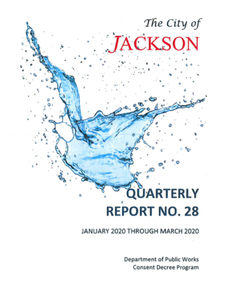
476,541,680 gallons of raw sewage leaked directly to the Pearl River from one location at 408 Jefferson St, Jackson during the heavy rain and flood events of the first 3 months of 2020. The largest single-day discharge occurred on January 11 when 6,831,520 gallons of raw sewage flowed from the Jefferson St manhole to the Pearl and then downriver. This is enough raw sewage released in ONE DAY to fill 10 Olympic swimming pools.
During the same quarter of Jan-Mar 2020, 36 additional Sanitary Sewer Overflow (SSO) discharges to "Waters of the State" occurred and prohibited bypasses at the Savanna Street Wastewater Treatment Plant (WWTP) released 5.7 billion gallons of minimally treated sewage to the Pearl.
Is public notification required during a Sanitary Sewer Overflow (SSO) event?
THE COMMUNITY HAS A RIGHT TO KNOW WHEN MILLIONS OF GALLONS OF RAW SEWAGE ARE BEING RELEASED TO WATERS OF THE STATE AND TO THEIR NEIGHBORHOODS.
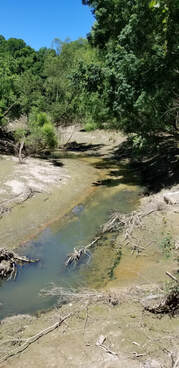
What is a a Sanitary Sewer Overflow?
A Sanitary Sewer Overflow (SSO) is an event in which untreated sewage is discharged from the sewage collection system into the environment prior to reaching the sewage treatment facilities. These discharges endanger human health, cause property damage, and degrade our local water quality.
What causes SSO events? The SSO events experienced by the City of Jackson collection system were caused by excessive flow, collapsed pipes, grease/fat buildup, and blockages from roots and solids. According to the Jan-Mar 2020 Quarterly Report, "The Jackson area received 29.74" of rainfall, or 105% above normal during the reporting period. Also during January and February 2020, the Pearl River was at or above flood action stage of 24 feet for 44 days. It should also be noted that the Pearl River reached a peak level of 36.67 feet on February 17, 2020, which is the third highest historical peak ever recorded. During this period, the system experienced a dramatic increase in inflow. Aerial inspection by the Mississippi Department of Emergency Management and the City of Jackson noted several damaged manholes that allowed floodwaters to enter the collection system." EPA Consent Decree In November 2012, the Jackson City Council entered into a consent decree with the EPA and MDEQ regarding operations at the Savanna Street Wastewater Treatment Plant. The consent decree required the City to pay a civil penalty of $437,916, execute a $875,000 environmental project, and overhaul its wastewater treatment plant and collection systems. The City was given 18 years to fully comply, with the vast majority of the work to be completed within the next 11 years (by 2023). The City of Jackson was required to develop prioritization work plans, rehabilitation plans, preventative maintenance programs and supplemental environmental program timelines. The City is required to submit quarterly, semi-annual and annual reports to the EPA and must publish these on their website. Recent Yearly Sewage Overflow Totals 2018:
Where have the City of Jackson 2020 SSO events to Waters of the State occurred?
Check out our interactive map below to find out if a SSO event that released sewage to Waters of the State occurred in your City of Jackson neighborhood. Click on the pinned locations for information about the date, location, cause of the overflow, and amount of untreated sewage released. Large Scale Map Link THE BACKSTORY The Rankin-Hinds Pearl River Flood and Drainage Control District (Levee Board) was established in response to a 1961 flood and Congressional-authorization for a Rankin and Hinds county federal flood control project. In 1964, the US Army Corps of Engineers (USACE) began construction on a 1.5 mile levee on the Jackson side of the river, a 10.3 mile levee on the Rankin side, along with 5 miles of river straightening and channelization.
THE JACKSON FLOOD OF 1979 Less than a decade later, in April 1979, the City of Jackson and surrounding counties were hit with the flood of record, devastating communities and causing an estimated $500-$700 million in damages. Thousands of homes and businesses in the Jackson area were inundated in the flood stage that lasted from 10 to 14 days in some areas. Again, Congress gave authorization for the USACE to develop a comprehensive flood control plan for the Jackson metropolitan area. Now, 41 years after the flood of record, there is still no flood mitigation for the Jackson metro area. What happened? DEVELOPMENT AS FLOOD CONTROL Following the 1979 flood, numerous Pearl River flood control plans are developed by the USACE. In 1996, the USACE Feasibility Report, Flood Control, Pearl River Basin, Jackson Metropolitan Area, Mississippi recommends a system of flood walls and levees for flood control called the Comprehensive Levee Plan. This plan is ready for implementation and construction in 1996 but does not satisfy the development desires of the Levee Board and local developers. 17 years after the 1979 flood, the Levee Board rejects a feasible flood control plan.
Does the Levee Board give up on their development as flood control projects after that? Of course not.
Does the Levee Board give up on their development as flood control project then? Of course not.
In 2007, 28 years after the 1979 flood, the Levee Board again rejects the Comprehensive Levee Plan which has USACE approval and also Congressionally-authorized federal expenditure.
ENTER THE ONE LAKE PROJECT
PAVE PARADISE AND PUT UP A PARKING LOT Continued construction in the flood plain since the 1983 flood, the 2nd highest flood on record, made predicting flood stage impacts for the most recent Feb 2020 flood more difficult. During this high water event, the 3rd highest flood on record, Mike Word, Rankin County Emergency Management Director, stated that, because of development in the decades since the last major flood, "nobody can tell you where the 38-foot mark goes" and how widespread the flooding will be. He said that the amount of concrete and asphalt and sedimentation built up in the basin area over years will prevent water from soaking into the ground and could exacerbate flooding. "Nobody knows for sure how much the basin will hold." (Clarion Ledger, Feb 15, 2020). Governor Reeves commented at a MEMA press conference on Feb 16, "There were areas, due in large part to construction since 1983, there were areas that were receiving water that we anticipated would not receive water until they were at 38' level. All of these projections are just projections because, when you think about the amount of construction that's happened, particularly in the Jackson area since 1983, what we find is that there are certain areas where 36' feels like 38' and maybe there are going to be some areas where 38' feels like 39 or 39.5." Channel 12 Meteorologist, Jacob Lanier, reported that the Feb 2020 flood impacts differed from the forecasts because, " the flood projection maps we used are almost entirely based on the 1983 flood. Over the past 40 years, Rankin County has vastly changed. Going from mostly farm land to a very urbanized area along Lakeland & Old Fannin. This development, with concrete and landscaping, has made it harder for water to pass through. So it acted as a dam of sorts, pushing flood water up the path of least resistance into Northeast Jackson & Hanging Moss Creek. This turned a 36.7 ft river into a 38 ft river for those neighborhoods." "FLOOD CONTROL" HUBRIS In an Engineering News-Record article from Feb 2020, Keith Turner, Levee Board attorney, is quoted, "The approach (One Lake) would also widen the river and make way for commercial development." Sound familiar? The hubris that their "flood control" project would work and would thus enable us to continue to build more structures in the flood zone. We've learned nothing since 1961, when a false sense of security created by a "flood control" solution, led to a massive encroachment on the Pearl River flood plain. Jackson does not need a flood plain development project. The Jackson-metro area needs levee improvements, levee setbacks to remove the metro-area bottleneck and allow for an expanded flood plain, local green infrastructure projects to control flash flooding combined with local adoption and enforcement of appropriate restrictions on further floodplain development and select buyouts of properties that continually flood. As we wait for the Levee Board to push through another misguided Lake plan, construction in Hinds and Rankin county flood zones continues, putting more people and structures at risk for the next high water event.
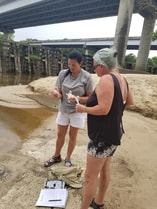 This summer, Pearl Riverkeeper volunteers conducted weekly E.coli testing at 17 Pearl River, Strong River and Ross Barnett Reservoir locations in order to provide you with information about whether it was safe to recreate! Expanding from 4 locations in 2018 to 17+ locations in 2019 would not have been possible without our amazing Water Rangers certified volunteer water monitors. Our volunteers are trained in the Quality Assurance protocols developed by Alabama Water Watch and certified by EPA Region 4. Neither the MS Department of Environmental Quality nor the MS Department of Public Health conducts this type of weekly E.coli testing on our freshwater rivers and reservoirs. We think that's a shame, so our volunteers spent Wednesdays in the summer testing your favorite Pearl River watershed locations to keep you informed! What is E.coli? Pearl Riverkeeper volunteers conducted 195 E.coli tests during 13 weeks in June through August at:
About our results: Heavy rains, particularly runoff from Hurricane Barry in July, had significant impact on local water quality. A rain event within 24 hours of testing often resulted in a "high E.coli" reading. Experts recommend that people use extra caution for several days after rainstorms as sewer overflows, failing septic and stormwater runoff can contain high levels of bacteria. What's next? Pearl Riverkeeper is continually expanding our citizen science water quality monitoring program. We will be training another group of Bacteriological Monitoring volunteers in Spring 2020. During the off season, Pearl Riverkeeper volunteers will be conducting monthly Bacteriological testing at current locations and at additional locations in the Jackson area. Bacteriological Monitoring at the Jackson area locations will be used to assess impacts to the Pearl River and its urban tributaries from sanitary sewer overflows and leaks. In addition to Bacteriological Monitoring, volunteers are also conducting Water Chemistry Monitoring which involves testing pH, dissolved oxygen, turbidity, hardness, alkalinity and temperature. The state of Mississippi has over 26,000 miles of perennial streams and rivers. For the state's 2016 Water Quality Assessment, MDEQ assessed only 11% of our waterways and stated that the status of water quality on the remaining 89% (23,568 miles) is unknown. Citizen science from our certified water quality monitors can help fill in the gaps and provide early detection of water quality issues in areas not actively monitored. HOW CAN YOU GET INVOLVED?
Thank you to all of our volunteers, supporters, Swim Guide, MDEQ and Global Water Watch for making this year of Swim Guide a huge success!
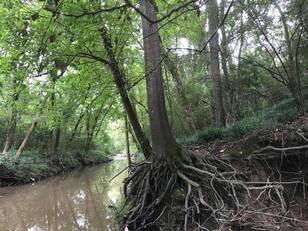 Lynch Creek, "Impaired"-Aquatic Life Support: Biological Impairment Lynch Creek, "Impaired"-Aquatic Life Support: Biological Impairment 9.6 million gallons of raw sewage and billions of gallons of minimally treated sewage released to the Pearl River and its tributaries in the second quarter of 2019. From Apr-June 2019, 43 separate Sanitary Sewer Overflow (SSO) discharges to "Waters of the State" occurred from the collection system sewer lines associated with the Savanna Street Wastewater Treatment Plant (WWTP). During this quarter, 165,760 gallons of raw sewage were released to Town Creek, 76,480 to Lynch Creek, 32,100 to Hanging Moss Creek, 10,150 to Purple Creek and 9.3 million gallons of raw sewage directly to the Pearl River. Total untreated sewage released by City of Jackson to the Pearl River watershed in the first two quarters of 2019 adds up to over 33.2 million gallons, enough to fill 50 Olympic size swimming pools. To put this amount in perspective, in 2016, Alabama Waterkeepers calculated the total sewage spilled for the entire year of 2016 throughout the entirety of Alabama waterways at 28.8 million gallons. The City of Jackson sanitary sewer system is exceeding this amount in 6 months into one watershed, our Pearl River. The US EPA suggests a benchmark of less than 4 SSOs per 100 miles of sewer per year. Last year, the City of Jackson had 18 SSO events per 100 miles of sewer. What is a a Sanitary Sewer Overflow? A Sanitary Sewer Overflow (SSO) is an event in which untreated sewage is discharged from the sewage collection system into the environment prior to reaching the sewage treatment facilities. These discharges endanger human health, cause property damage, and degrade our local water quality.
What causes SSO events? The SSO events experienced by the City of Jackson collection system were caused by excessive flow, collapsed pipes, grease/fat buildup, and blockages from roots and solids. EPA Consent Decree In November 2012, the Jackson City Council entered into a consent decree with the EPA and MDEQ regarding operations at the Savanna Street Wastewater Treatment Plant. The consent decree required the City to pay a civil penalty of $437,916, execute a $875,000 environmental project, and overhaul its wastewater treatment plant and collection systems. The City was given 18 years to fully comply, with the vast majority of the work to be completed within the next 11 years (by 2023). The City of Jackson was required to develop prioritization work plans, rehabilitation plans, preventative maintenance programs and supplemental environmental program timelines. The City is required to submit quarterly, semi-annual and annual reports to the EPA and must publish these on their website. Savanna Street Wastewater Treatment Plant According to the 2019 quarterly reports, a Savanna Street Wastewater Treatment Plant "Prohibited Bypass" that began on Dec 9, 2018 and lasted several months released 4.06 billion gallons of minimally treated sewage to the Pearl River. A "Prohibited Bypass" occurs when the plant is overwhelmed with excessive flow, usually due to high rain events, and bypasses must occur. "All bypassed volume is chlorinated, de-chlorinated and required samples taken prior to blending with the mechanical plant effluent and subsequently discharged to the Pearl River". Is public notification required during an SSO event?
Where have the City of Jackson 2019 SSO events occurred?
Check out our interactive map below to find out if a SSO event occurred in your City of Jackson neighborhood. Click on the pinned locations for information about the date, location, cause of the overflow, and amount of untreated sewage released. Large Scale Map Link
One Lake project's Feasibility Study/Environmental Impact Statement (FS/EIS) and other required documents may be sent to the Army Corps of Engineers as early as this September, a spokesperson for the Pearl River River Vision Foundation reported at the Rankin Hinds Pearl River Flood and Drainage Control District (Levee Board) meeting this morning. Here's a partial list of all of the potential hurdles required of the Levee Board before and after the FS/EIS report is sent to the Corps. Before sending the FS/EIS to the Corps, the project sponsors must:
Once complete, send FS/EIS and other required documents to the Assistant Secretary of the Army for Civil Works ((ASA(CW)). Upon receipt of the FS/EIS, the ASA(CW) will refer the study to the Chief of Engineers for review and comments. The ASA(CW) will review for compliance with law, policy and procedures. ASA (CW) will submit to the Committee on the Environment and Public Works of the Senate and the Committee on Transportation and Infrastructure of the House of Representatives a report that describes whether the project if feasible and any recommendations or conditions. Office of Water Project Review (OWPR) will prepare comments. OWPR will dispatch letters transmitting information regarding the project proposal, draft environmental compliance documents and related documents to State and Federal agencies for comment. Once the FS/EIS is deemed acceptable to the ASA (CW), the project sponsors must:
ASA(CW) will prepare a Finding of No Significant Impact or Record of Decision. ASA(CW) will submit its recommendation to the Office of Management and Budget and then to Congress. If ASA (CW) issues positive Record of Decision, the project sponsors must then:
Follow Pearl Riverkeeper for news as this process progresses. 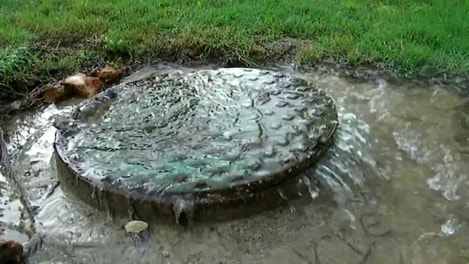 23.6 million gallons of raw sewage and billions of gallons of minimally treated sewage to the Pearl River and its tributaries in the first quarter of 2019. From Jan-March 2019, 65 separate Sanitary Sewer Overflow (SSO) discharges to "Waters of the State" occurred from the collection system sewer lines associated with the Savanna Street Wastewater Treatment Plant (WWTP). In the first quarter 2019, raw sewage released from the West Bank Interceptor line totaled 23 million gallons, 4 times the total amount of raw sewage released during the entire year of 2018. Untreated sewage has flowed into most of the Jackson creeks that lead to the Pearl River, including Town, Eubanks, Belhaven, Lynch, Hanging Moss, Eastover and others. What is a a Sanitary Sewer Overflow? A Sanitary Sewer Overflow (SSO) is an event in which untreated sewage is discharged from the sewage collection system into the environment prior to reaching the sewage treatment facilities. These discharges endanger human health, cause property damage, and degrade our local water quality.
The SSO events experienced by the City of Jackson collection system were caused by excessive flow, collapsed pipes, grease/fat buildup, and blockages from roots and solids. Higher than average rainfall in the first quarter of 2019 overwhelmed the system. In addition, the City of Jackson's aging sewer lines are crumbling and collapsing in many areas. EPA Consent Decree In November 2012, the Jackson City Council entered into a consent decree with the EPA and MDEQ regarding operations at the Savanna Street Wastewater Treatment Plant. The consent decree required the City to pay a civil penalty of $437,916, execute a $875,000 environmental project, and overhaul its wastewater treatment plant and collection systems. The City was given 18 years to fully comply, with the vast majority of the work to be completed within the next 11 years (by 2023). The City of Jackson was required to develop prioritization work plans, rehabilitation plans, preventative maintenance programs and supplemental environmental program timelines. The City is required to submit quarterly, semi-annual and annual reports to the EPA and must publish these on their website. Recent City of Jackson actions
Consent Decree Renegotiation The City of Jackson has requested that the EPA review the Consent Decree for potential renegotiation citing lack of funding to complete the necessary requirements of the original decree. The EPA is currently working through that process. If there is a "major modification" to the Consent Decree, then the amended decree will go to public notice with an associated public comment period. Pearl Riverkeeper will keep you updated if this occurs. Savanna Street Wastewater Treatment Plant According to the 2019 first quarterly report, there has been an ongoing "Prohibited Bypass" at the Savanna Street Wastewater Treatment Plant since Dec 9, 2018. A "Prohibited Bypass" occurs when the plant is overwhelmed with excessive flow, usually due to high rain events, and bypasses must occur. "All bypassed volume is chlorinated, de-chlorinated and required samples taken prior to blending with the mechanical plant effluent and subsequently discharged to the Pearl River". As of the end of the first quarter reporting period, 2.47 billion gallons of minimally treated sewage has been discharged to the Pearl River. Is public notification required during an SSO event?
Where have the City of Jackson 2019 SSO events occurred? Check out our interactive map below to find out if a SSO event occurred in your City of Jackson neighborhood. Click on the pinned locations for information about the date, location, cause of the overflow, and amount of untreated sewage released. Large Scale Map Link
According to EPA's most recent Toxic Release inventory (TRI) National Analysis, over 4 million pounds of toxic chemicals were dumped into the Pearl River in 2017. The vast majority of this toxic waste came in the form of nitrates from 3 poultry processing companies, Tyson Foods, Sanderson Farms and Peco Foods.
Nitrate pollution has numerous "external costs" to the environment which are not paid for by the companies discharging this toxic waste. These external costs, borne by the taxpayer and the public in general, include:
In addition to the nitrate compounds dumped by the poultry processing industry, Georgia-Pacific and International Paper together contributed 335,159 pounds of toxic discharges to our watershed, including manganese compounds, methanol, nitrate compounds, ammonia, barium compounds and acetaldehyde. Georgia-Pacific paper mill in Monticello, MS released 13,864.62 pounds of carcinogenic acetaldehyde to the Pearl River. This Pearl River Basin chemical discharge data was compiled from the EPA's 2017 Toxic Release Inventory (TRI) National Analysis Report of chemical discharges to air, land and water. "The TRI tracks the management of certain toxic chemicals that may pose a threat to human health and the environment. Certain industrial facilities in the US must report annually how much of each chemical is recycled, combusted for energy recovery, treated for destruction, and disposed of or otherwise released on- and off-site." The discharge of these chemicals is legally authorized by each state through the National Pollution Discharge Elimination System. Mississippi and Louisiana Departments of Environmental Quality test their waterways, designate the waterway sections as "attaining their designated use" or as "impaired" and make Total Maximum Daily Load (TMDL) discharge determinations. The TMDL is then used as the basis for discharge permit authorizations. "Since the creation of the TRI Program, the information collected and presented has provided a way for citizens to better understand possible sources of pollution in their communities. This better understanding can be the basis for actions, such as communications with facilities releasing chemicals to the environment and with regulatory authorities that have oversight responsibilities. This concept of citizen empowerment is summed up by the slogan, 'A Right to Know, A Basis to Act'." EPA.gov. Louisiana ranks 4 out of 56 states/territories nationwide based on total releases per square mile (rank 1 = highest releases). Mississippi ranks 11 out of 56. The TRI is easily searchable by state, county, city or zip code: https://www.epa.gov/trinationalanalysis/where-you-live. Join forces with Pearl Riverkeeper to help protect our watershed by signing up for our newsletter, becoming a member or volunteering for our Clean Water Team. Pearl Riverkeeper conducted an analysis on the 2017 Toxic Release Inventory National Analysis Report database published by the EPA. Errors are possible. Please consult the EPA website for the full report. Fascinating video of the One Lake project discussion at the Lower Pearl River Basin Task Force meeting, Louisiana State Senate. Particularly interesting discussion at the 1 hour 11 minute mark about serious impacts to water quality in Louisiana. Probably not good if a discussion of your DEIS includes comments like "they have some explaining to do", "that blows my mind; I can't believe what I am hearing", "pretty scary" and "do it first, hope for the best". Definitely worth the watch.
|
AuthorPearl Riverkeeper is a licensed member of the Waterkeeper Alliance, the largest and fastest growing nonprofit solely focused on clean water. Archives
July 2024
Categories |
|
Ready to support our work for Clean Water and Healthy Rivers?
|
|

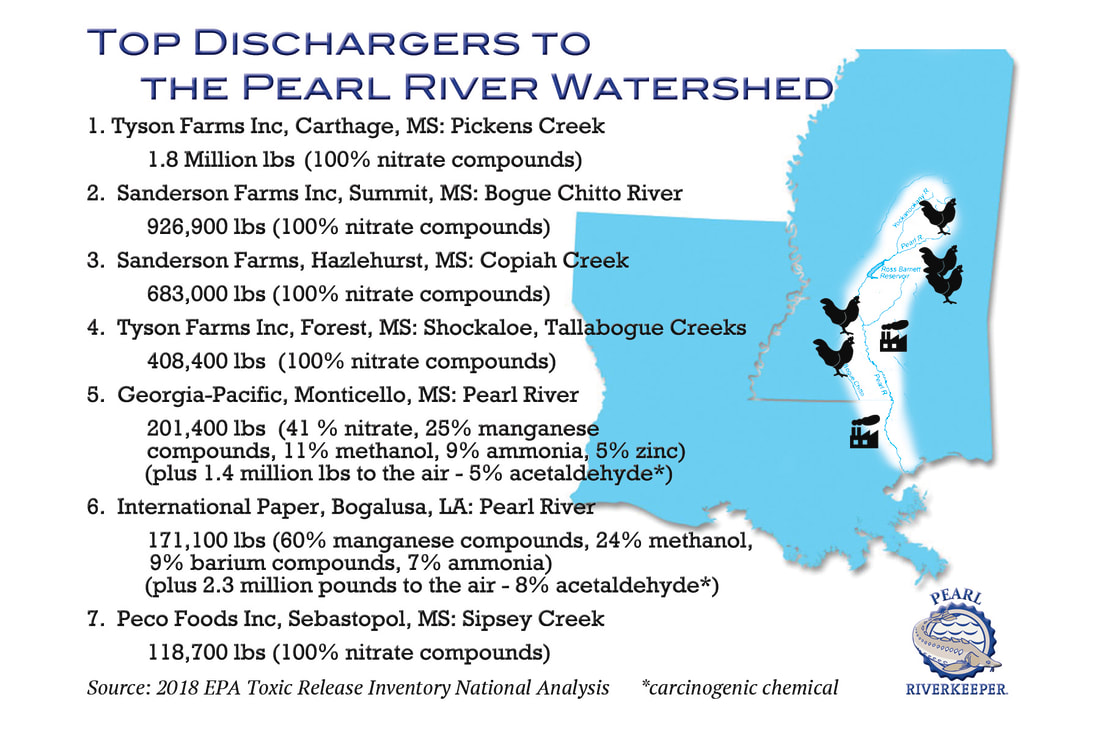
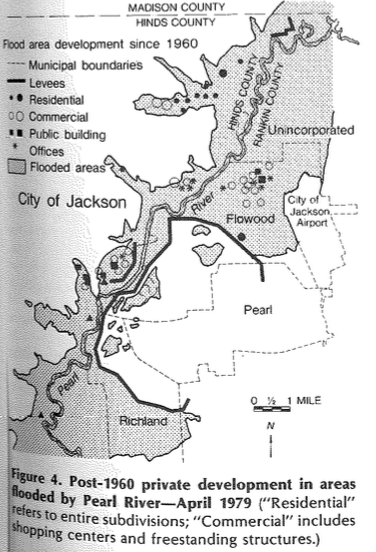
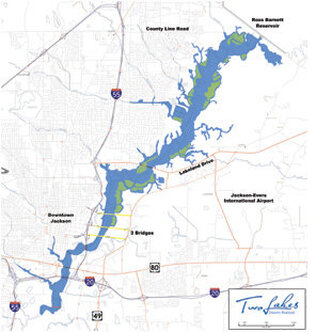
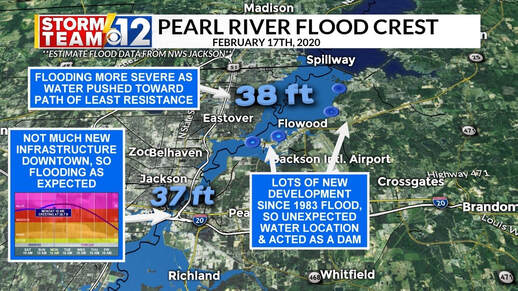
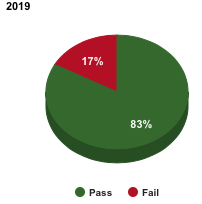
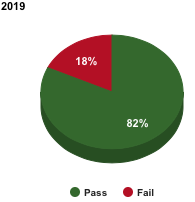
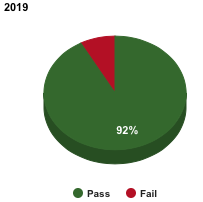
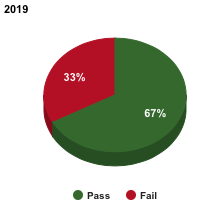
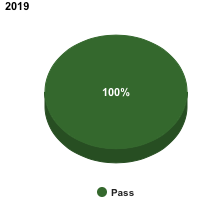
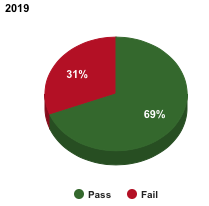
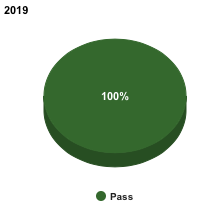
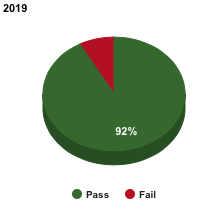
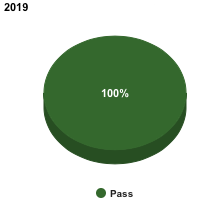
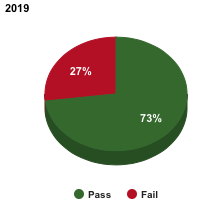
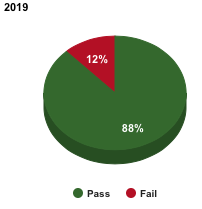
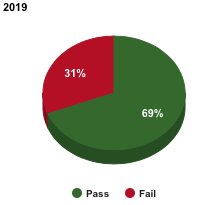
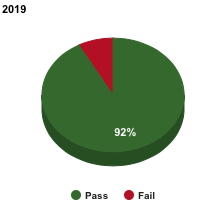
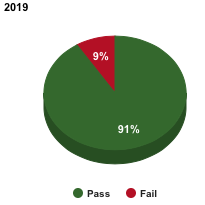
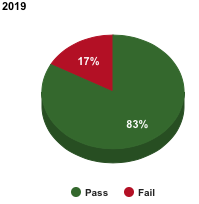
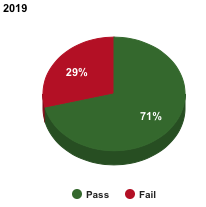
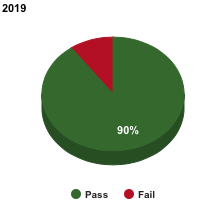
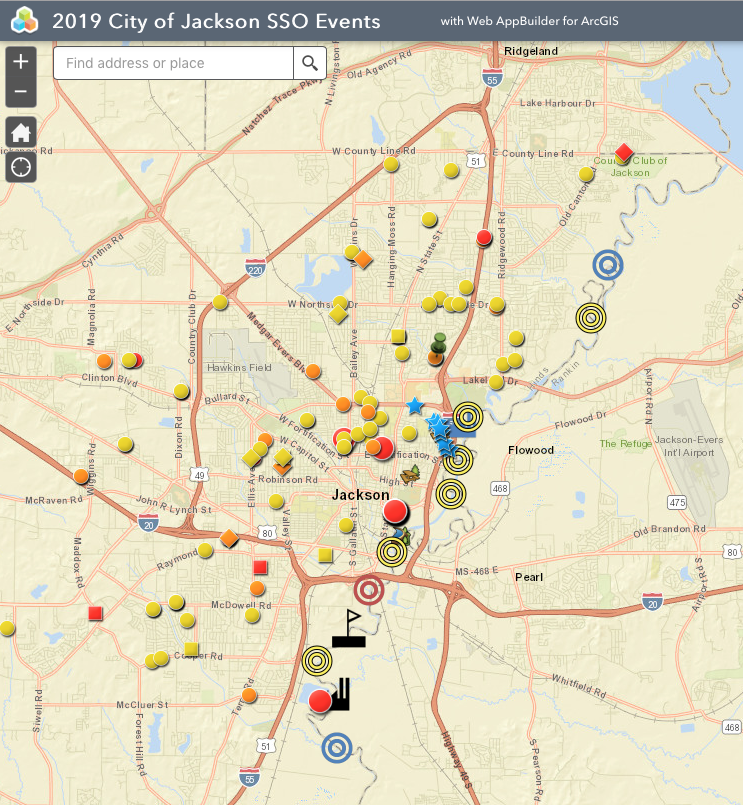
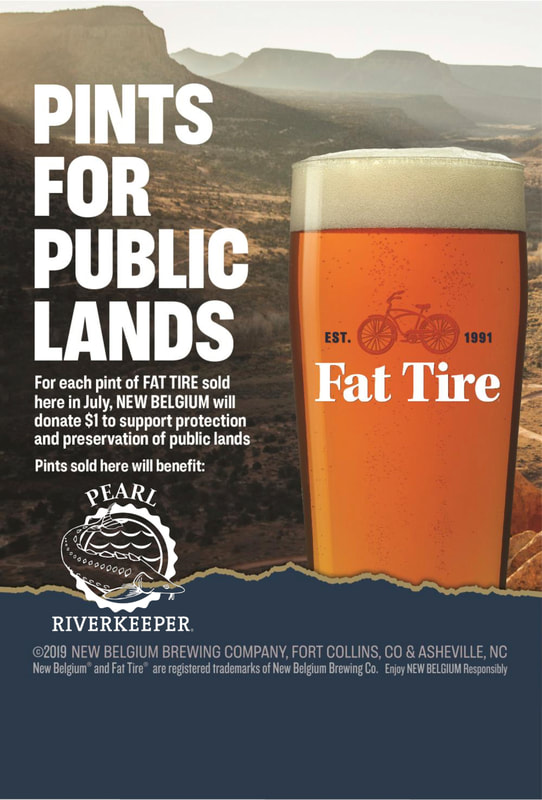
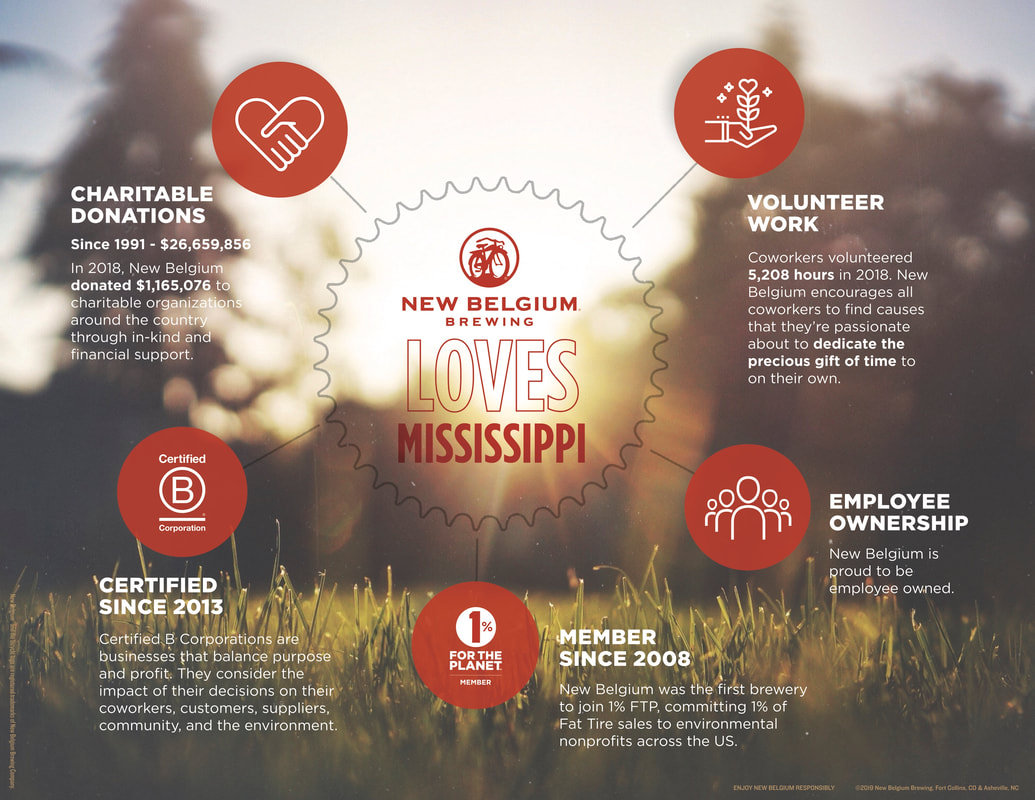


 RSS Feed
RSS Feed
